


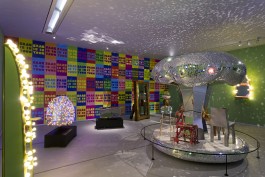
Hide & Seek, Groninger Museum (NL) 2017, Photo: Marten de Leeuw
A conversation with Dutch designer Maarten Baas about art and design, limitations by structure, naivety, and his current solo exhibition at Groninger Museum.
Maarten Baas, Groninger Museum in the Netherlands is currently showing your first big solo exhibition, 'Hide & Seek'. At an age of 39, how does that feel, such a retrospective?
If I position myself as a watching from outside, I see it as extraordinary to have this opportunity. It's very special to see all my work, presented that well. As an insider, I see it as just my work, to make an exhibition as good as possible. I’ve never had a goal in my career, I just do what comes along on my path.
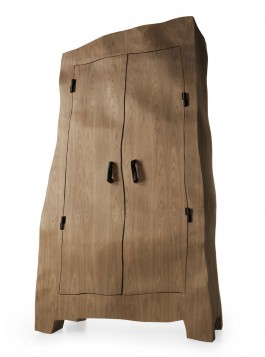
Sculpt cupboard, photo: studio Maarten Baas
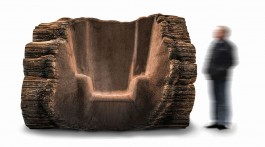
Tree Trunk chair (standing), 2016, 200 years
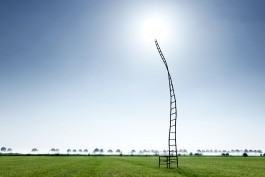
Amnesty chair, Photo: Frank Tielemans
You became known by series as Smoke, Clay, Real Time, which definitely don't follow usual design strategies. You once mentioned that you always 'have to cross borders, try new things'. How do you keep your motivation up? How do you choose the next step?
The choice is intuitive. Even if there’s no next step, then the recipe is to stand still. From 2010 to 2014 I didn’t make any new collection, I worked only under the radar: those years are not represented in the Hide & Seek exhibition. I keep myself motivated by putting myself in an insecure path, never resting on what I have, but always curious for something I don’t know yet.
The text on the exhibition quotes you by saying that 'according to Baas, structure only creates limitation'. Could you elaborate on that a bit? How do you work by or through or aiming at an absence of structure?
Haha, I don’t remember I said that, but yes, it makes sense. To stick with a plan is good when you execute something of which you know what it should be. But a creative process is always something you don’t know yet. So, then a plan can be very limiting. In wider perspective, my whole career is one creative process. I always allowed myself to stay flexible in any circumstances.
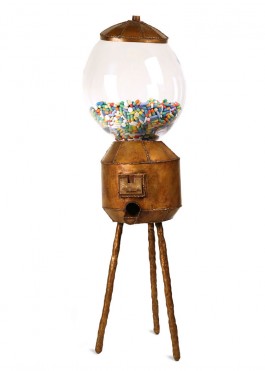
Happy bronze medicine chest, Photo: Kazoe van den Dobbelsteen
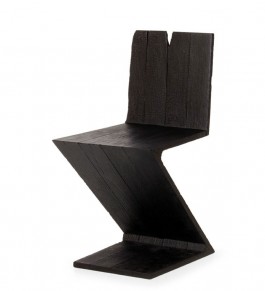
Smoke Rietveld Zigzag chair, Photo: studio Maarten Baas
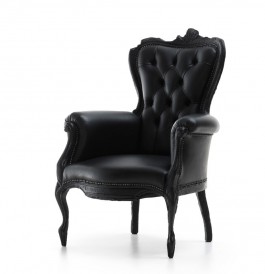
Smoke fauteuil, Photo: Frank Tielemans
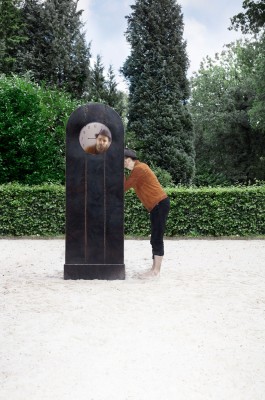
Groninger Museum campaign image Hide & Seek, Photo: Lisa Klappe
You also once said that a certain narrative is a starting point for your design, then choosing the suitable material and technology. How important is this material issue then?
In my work, the material is supportive to the concept, not the other way around. But to support the concept well, it often needs to be a good material, finished well, with a lot of attention and labour. For instance, the chewingball machine – filled with medicines – and the fun-mirrors are made in bronze. They’re symbols of entertainment and superficiality, so I think it’s beautiful to make that in a timeless material. The same for the sketchy furniture, which often is my trademark: the naivety of the piece is better if the execution is perfect.
You are acting between clearly defined 'disciplines', being an artist and/or/neither/nor a designer. Would you say that this inbetween- or actually rather inclusive position is a very individual trait of yours, or is it a general phenomen of our period?
It has always been the case. Look at the Rietveld chair of 100 years ago: an artwork in the shape of a chair.
Your first highly recognized project was Smoke, where you changed the appearance of furniture and even design classics by burning them. This could also be read as a cultural or even social statement. Should creative work in general and design specifically be socially or even politically involved?
I never say what 'should or shouldn’t be', I only speak for myself. Which is in this case: I don’t want to say anything political or social in my works.
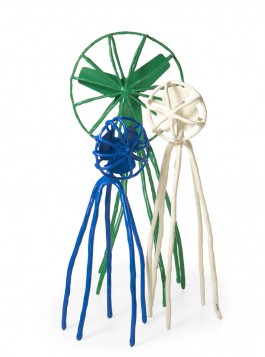
Clay floorfan, Photo: studio Maarten Baas
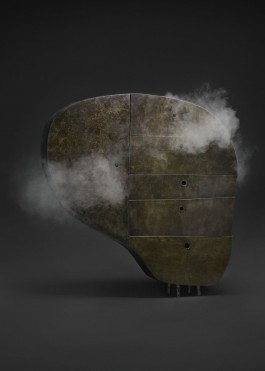
Close Parity, 2016, prototype, Photo: Erwin Olaf
Profil
Maarten Baas, born in 1978, is considered to be one of today's most influential Dutch designers. His work on the boundaries between art and design covers all fields from conceptual designs and products to architecture, interiors and performances. Works by Baas are part of museum collections e.g. of the MoMA, V&A Museum and Rijksmuseum as well as of renowned private collections.
Maarten Baas' first big solo show, 'Hide & Seek', is currently shown at Groninger Museum (NL), still running until 24 September 2017.
www.maartenbaas.com
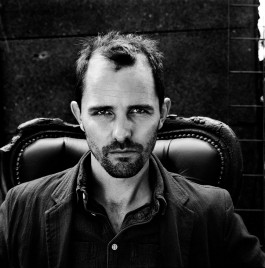
Maarten Baas, Photo: Anton Corbijn